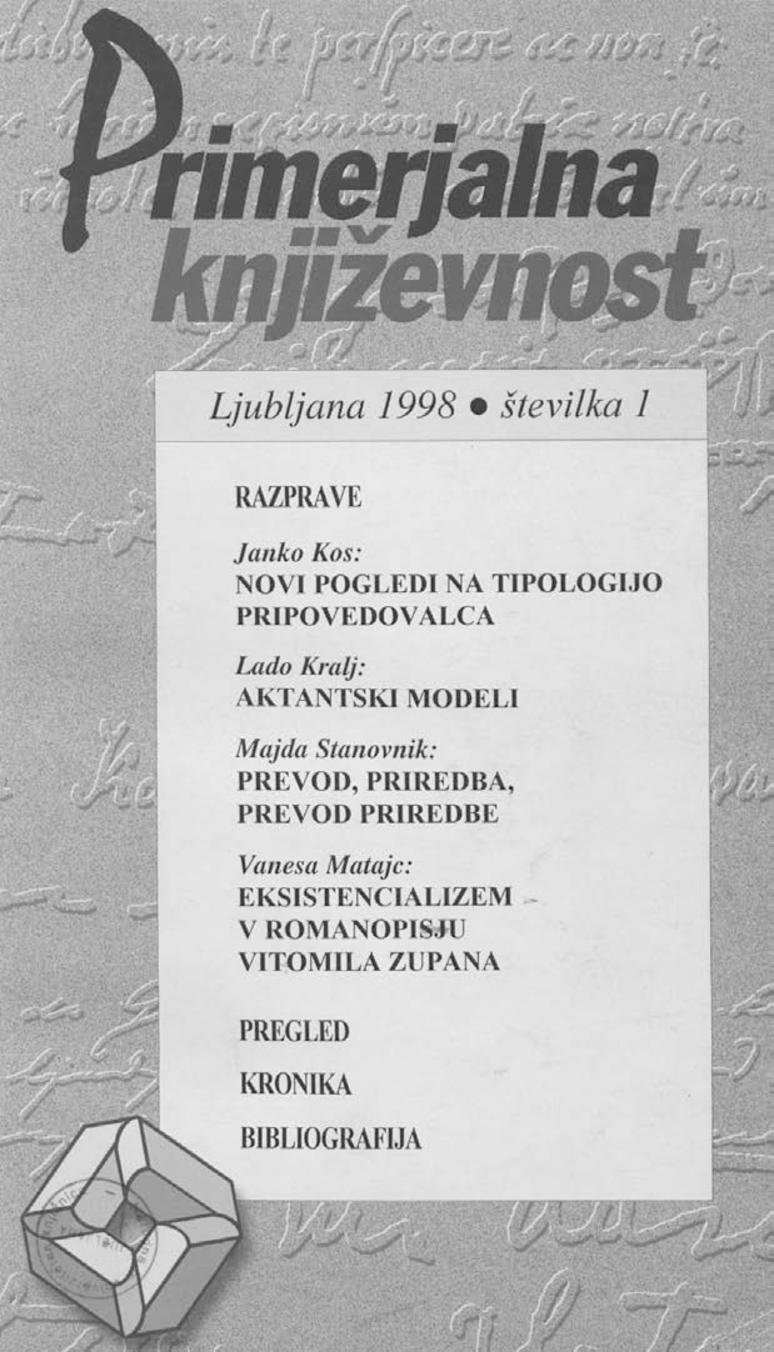Actant Models
Keywords:
literary theory, drama theory, dramatic structure, dramatic technique, actant models, Greimas, Julien Algirdas, Ubersfeld, AnneAbstract
This treatise follows and comments on the historical development of actant models. Their currently established form and terminology were established by A. J. Greimas who applies them to all literary genres; A. Ubersfeld took Greimas idea and adjusted it to the special demands of drama, and later on made it prominent as a useful instrument of dramatic analysis. The actant model actually appeared in its rudimentary form in the second half of the 18th century, when first defined by Italian dramatist, Carlo Gozzi, who presumably derives it from the special structure of character and action in comedia dell’arte. In later phases of development, actant models were twice used to analyze drama (by G. Polti and E. Soruinau) and only once in narrative, i.e. in a fairy-tale (by V. Propp). Greimas added a vital new dimension in this development. On the basis of the thesis of linguist L. Tesnier, he defined the actant model as an extrapolation of synthetic structure, which also means that every narrative and hereafter the plot as a whole has its own subject, object, sender, receiver, aid and opponent. The present paper deals with variants of the actant model since Gozzi, with the aid of Greimas’ uniform terminology. In this way, a comparison between models becomes much clearer, if not impossible without the Greimas terminology. On the basis of these comparisons, A. Ubersfeld’s work can be seen as a convergence of historical forms, while drama can be described as the most suitable for this kind of analysis. Ubersfeld also introduced special features, including the possibility that an actant is abstract, i.e. non-personal, or even that some actant positions remain unoccupied. Such unoccupied actant positions very clearly indicate that the most essential characteristic feature of the play discussed is constituted per negationem, i.e. by the absence of some fundamental and almost indispensable primary matter. Ubersfeld’s complex, though easily discernible apparatus enables the analysis of drama which originates from a deep, archaic, as it were, structure of the text, which may be better protected from ideological projections than any other method.References
ECKERMANN, Johann Peter: Pogovori z Goethejem. Prev. J. Vidmar. Ljubljana, 1959. Izvirnik: Gespräche mit Goethe in den letzten Jahren seines Lebens, 1836–1848.
GOZZI, Carlo: Opere. Teatro e polemiche teatrali. Ur. Giuseppe Petronio. Milano, 1962.
GREIMAS, Algirdas Julien: Sémantique structurale. Pariz, 1966.
JAVORŠEK, Jan Jona: »Elementi Maeterlinckove dramske tehnike v Cankarjevi dramatiki.« Primerjalna književnost, 20, 1997, št. 1: 63–84.
LEWANDOWSKI, Theodor : Linguistisches Wörterbuch, I–III. Heidelberg, 1984 (I), 1985 (II), 1994 (III).
PIRJEVEC, Dušan: Ivan Cankar in evropska literatura. Ljubljana, 1964.
POLIT, Georges: Les Trente-six situations dramatiques. Pariz, 1980. Izvirnik: 1895.
PROPP, Vladimir: Morfologija skazki. Leningrad, 1928.
SOURIAU, Étienne: Les deux cent mille situations dramatiques. Pariz, 1950.
UBERSFELD, Anne: Lire le théâtre, I. Pariz, 1996 (19781).


